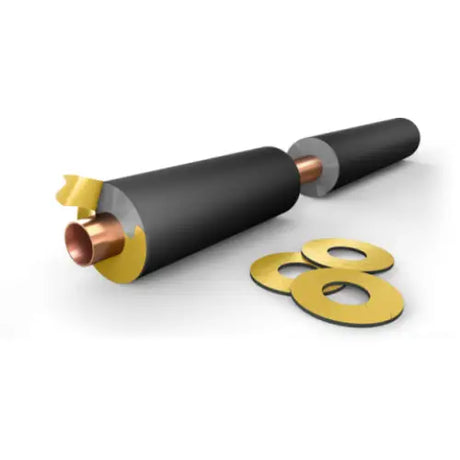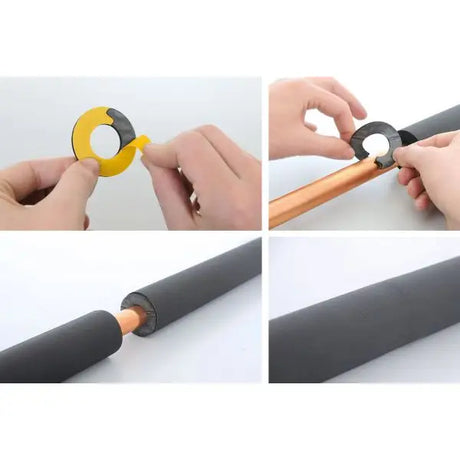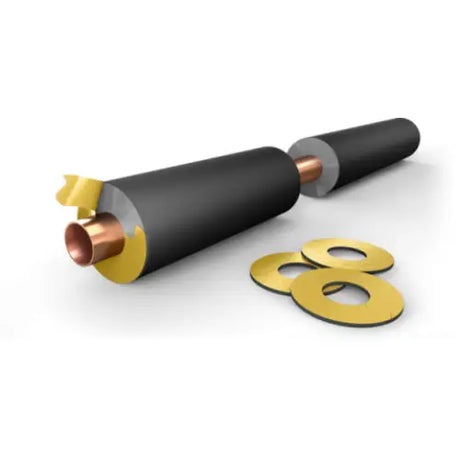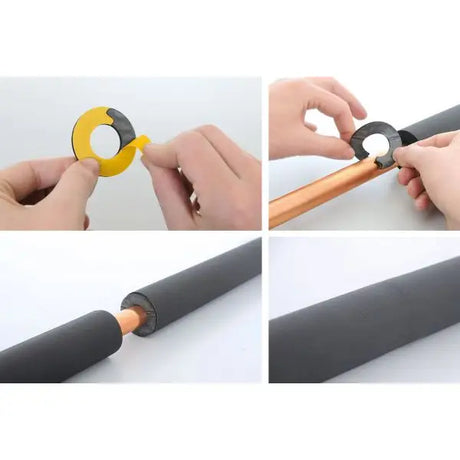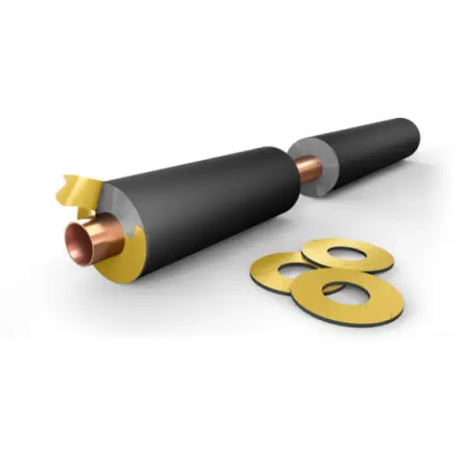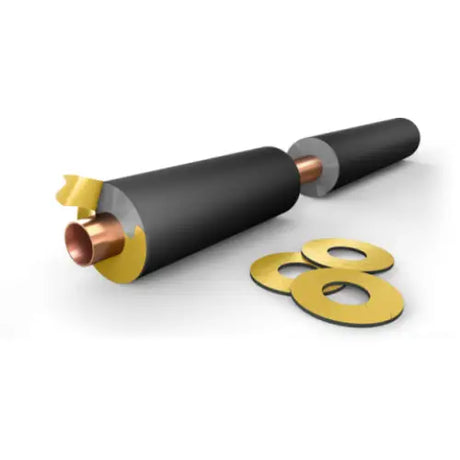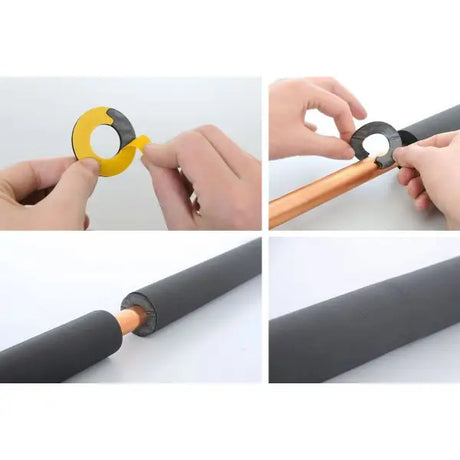What Is A Butt Joint?
A butt joint is a type of joint where two members or components are joined end-to-end, with their ends abutting each other. It is a simple and common way to connect members or materials together.
In the context of insulation, a butt joint refers to the method of joining two pieces of insulation material by bringing their ends together. Specifically:
- Generic butt joint:
- Two pieces of material (e.g., wood, metal, insulation) are placed end-to-end, with their ends meeting flush against each other.
-
It creates a joint between the two pieces without any overlapping or interlocking.
-
Butt joint in insulation:
- Insulation materials like elastomeric foam, nitrile rubber, fiberglass batts, rigid foam boards, or mineral wool are cut to size and installed by butting their ends together.
- The ends of the insulation pieces meet without any gaps or overlaps, creating a continuous insulation layer.
- Butt joints in insulation aim to minimize thermal bridging and maintain consistent insulation performance throughout the assembly.
- However, butt joints can create potential air leakage paths if not properly sealed, so they may require additional taping, caulking, or sealants to ensure an airtight installation.
The key purpose of a butt joint in insulation is to provide a continuous and uniform insulation layer while joining multiple pieces of insulation material together in a simple and efficient manner.
Insulation Butt Joint FAQs
Do Butt Joints Need Tape?
Yes, butt joints in insulation installations often require taping or sealing to prevent air leakage and maintain the insulation's effectiveness. While the butt joint itself creates a continuous insulation layer, the seams between the insulation pieces can create potential air paths if left unsealed. Taping or caulking the butt joints with appropriate sealants or tapes helps create an airtight assembly and ensures optimal thermal performance.
Why Are Butt Joints Preferred to Other Types of Adhesives?
Butt joints are generally preferred over adhesives in insulation installations for a few reasons:
- Simplicity: Butt joints are straightforward to create, requiring no additional adhesives or fasteners.
- Reversibility: Insulation materials joined with butt joints can be easily removed or adjusted if needed, unlike adhesives which can permanently bond the materials.
- Cost-effectiveness: Butt joints eliminate the need for purchasing and applying adhesives, reducing material and labor costs.
- Compatibility: Butt joints are compatible with most types of insulation materials, while adhesives may have compatibility issues or require specific types of insulation.
How Are Butt Joints Sealed in Insulation Applications?
Butt joints in insulation installations are typically sealed using one of the following methods:
- Taping: Applying specialized insulation tapes or foil-faced tapes over the butt joint seams.
- Caulking: Using appropriate caulking or sealant compounds to seal the joint between the insulation pieces.
- Gaskets: Installing continuous gasket materials along the butt joint to create an airtight seal.
- Spray foam: Applying low-expansion spray foam along the butt joint seams to fill and seal any gaps.
What Are the Advantages of Using Butt Joints in Insulation?
The main advantages of using butt joints in insulation installations include:
- Ease of installation: Butt joints are simple to create, requiring no specialized tools or techniques.
- Continuous insulation layer: Properly sealed butt joints maintain a continuous insulation layer, minimizing thermal bridging.
- Flexibility: Butt joints allow for easy removal or adjustment of insulation materials if necessary.
- Cost-effectiveness: Butt joints eliminate the need for additional adhesives or fasteners, reducing material and labor costs.
Are Butt Joints Suitable for All Types of Insulation Materials?
Butt joints are suitable for most common insulation materials, including:
- Fiberglass batts
- Rigid foam boards (e.g., XPS, EPS, polyiso)
- Mineral wool batts or boards
- Spray foam insulation
However, for certain insulation materials like loose-fill or blown-in insulation, butt joints may not be practical, and other installation methods may be more appropriate.
How Can Butt Joints Be Reinforced for Added Strength?
In some cases, butt joints in insulation installations may require additional reinforcement or support, especially in areas subject to mechanical stress or vibration. Some methods to reinforce butt joints include:
- Insulation hangers or supports: Installing mechanical hangers or supports to hold the insulation pieces in place and prevent joint separation.
- Adhesive or sealant beads: Applying continuous beads of adhesive or sealant along the butt joint to provide additional bonding strength.
- Furring strips: Attaching furring strips or framing members over the butt joint to provide mechanical support.
What Are the Potential Issues with Butt Joints in Insulation?
While butt joints are commonly used in insulation installations, they can present some potential issues if not properly addressed:
- Air leakage: Unsealed butt joints can create air leakage paths, reducing the insulation's effectiveness.
- Thermal bridging: Gaps or misalignments in butt joints can lead to thermal bridging, compromising the insulation's performance.
- Moisture infiltration: Unsealed butt joints can allow moisture to penetrate the assembly, potentially leading to condensation or mold growth.
- Insulation compression: In certain applications, butt joints may be prone to compression or deformation over time, reducing insulation thickness and performance.
How Can Butt Joints Be Aligned Properly During Installation?
Proper alignment of butt joints is crucial for maintaining a continuous insulation layer and preventing gaps or misalignments. Here are some tips for aligning butt joints during installation:
- Use insulation with straight, factory-cut edges whenever possible.
- Employ guides or framing members to help align and support the insulation pieces.
- Stagger or offset butt joints in adjacent rows or layers of insulation to prevent continuous seams.
- Use temporary fasteners or adhesives to hold the insulation pieces in place while aligning the butt joints.
- Ensure that butt joints are tightly butted together without gaps or overlaps.
How Do Butt Joints Affect the Overall R-Value of Insulation?
Properly installed and sealed butt joints should not significantly impact the overall R-value (thermal resistance) of the insulation assembly. However, if butt joints are left unsealed or have significant gaps or misalignments, they can create thermal bridging paths, effectively reducing the insulation's overall R-value and thermal performance.
To maintain the intended R-value, it is crucial to ensure that butt joints are tightly butted together, sealed with appropriate tapes or sealants, and aligned correctly to prevent any gaps or thermal bridges.


